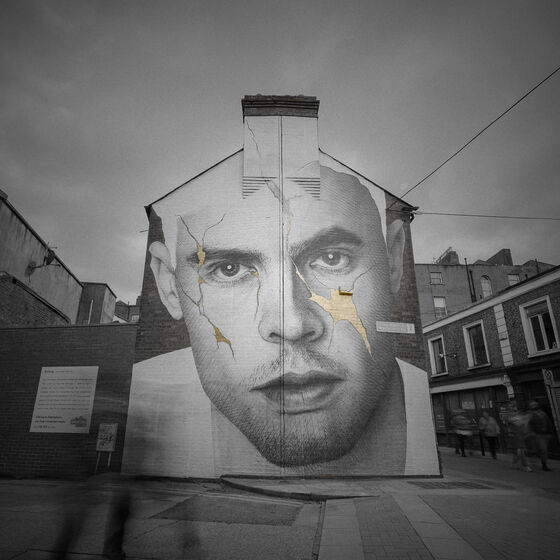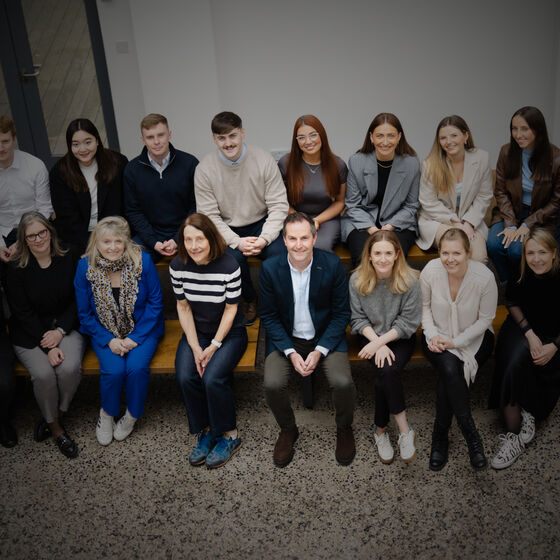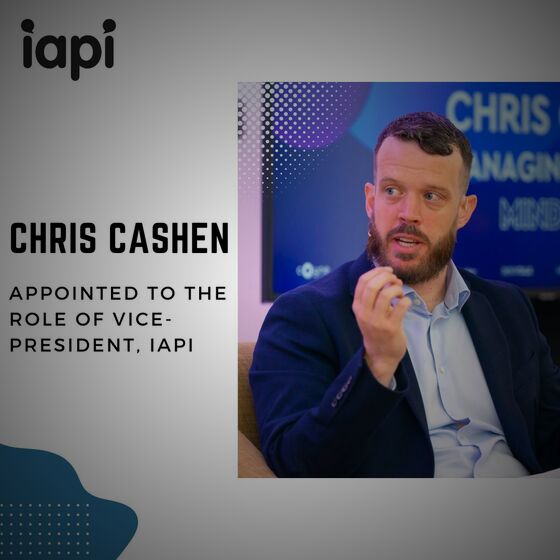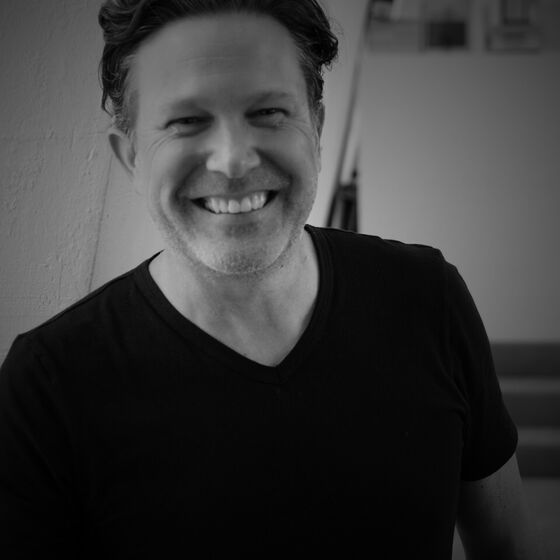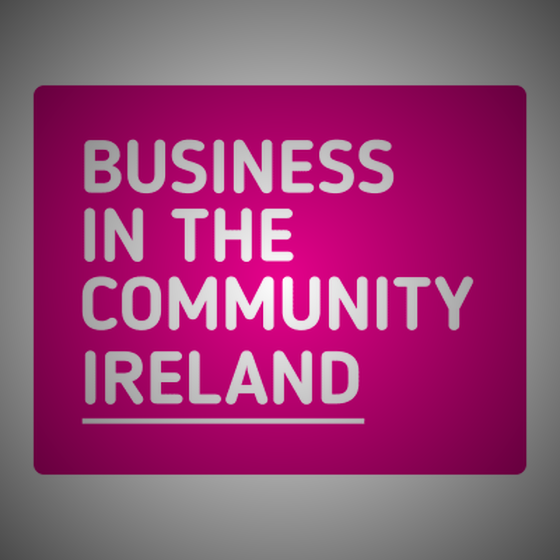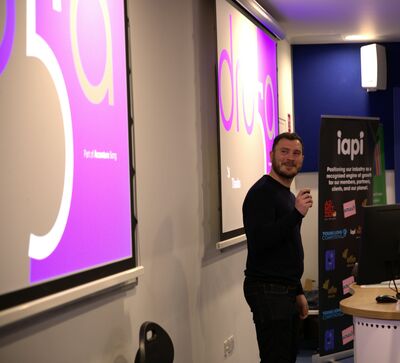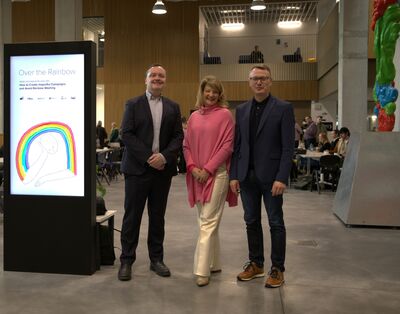This week ADvocates Ireland, Outhouse LGBTQ+ Centre, IAPI, Marketing Institute Ireland, Ibec and Technological University Dublin, hosted an event for the industry: brand owners and marketeers, advertising agencies, and media companies to inspire & empower a room of community & allies on how to create authentic campaigns with lasting impact that are inclusive of the LGBTQ+ community.
Oisin O'Reilly, CEO of Outhouse LGBTQ+ Centre, set the scene on how to ignite and sustain positive change. “The future is queer 4% Boomers are LGBTQ+ & 18% of Gen Z identify as LGBTQIA+ - brands need to represent this growing population. The corporate movement is crucial in supporting the community, with 2023 being the most violent year yet against the community. Corporate allyship helps to combat extremism and provide a safe space that allows LGBTQ+ folks to feel safe, seen and celebrated.”
Darius Pasalar, Head of Planning at Droga5 Dublin, inspired us with his 5 guiding principles - “the graft behind the glitter” and shared some of Droga 5’s work for Dublin Bus such as Proud Dads - an inspiring impactful genuine piece of creative. Darius’s Insights on Best Practice are reproduced below.
Richard Miley, Marketing Lead at An Post, shared powerful examples of the progressive campaigns at An Post, from representing queer couples in an authentic way through their trio of Christmas ads, to their hugely impactful Bród campaign in 2021 - celebrated in 900 stores across Ireland with merchandise, charity partner support, postmark, playlist, Bród post card door drops and more.
These keynotes were followed by an animated panel discussion moderated by Niall Cowley from We The People / ADvocates Ireland, as Jill Downey, Amanda Adé ( Adewole), Stephen Whelan, Richard Miley & Oisin O'Reilly shared their experiences & opinions on getting it (badly) wrong, the political climate, rainbow hushing, learning as we go and support from the community.
For those that couldn’t attend the event this week, Darius Pasalar, Head of Planning at Droga5 Dublin has provided his best practice insights below. Following these five guiding principles will help your business to create more genuine, meaningful and impactful work for PRIDE 2024:
It has a negative effect on brands and organisations, and on the LQBTQ+ community.
When it comes to marketing and communications for Pride, there are five simple rules of engagement that can help empower you.
When using these rules of engagement, remember they’re not a holy text, but more simple ways to help make work to be proud of at Pride.
Before we get to the graft behind the glitter of Pride, I have a small personal note. As a nation, we have come so far - but we have further to go. I hope these tried and tested rules help provoke a practical level of thinking and action, so we all can be equal, celebrated, and safe.
Now, let’s get into it:
What’s the alignment between the client, charity partner, and Pride’s purpose?
Whether it’s continuing a commitment to Pride or just starting out, take it all back to the purpose of all of the players at hand. As a first step, it allows us to recognise where there is common ground between everyone involved.
I recognise that for some organisations and brands this can be more apparent than others, but for human-centric brands there should always be an alignment.
If they’re not all aligned, it’s not going to work.
So is this all about purpose advertising?
Yes, and no.
We are in a period where purpose-led communications are under question, as we’ve seen through sources such as the IPA data base, but let’s not forget the alignment of purposes doesn’t always mean advertising. We need to be open to the elasticity of brand purposes and how they can manifest in the world.
Have strong proof points and credentials from a brand side. Don’t expect to just hide behind a partner's credentials or worse offer an empty pledge.
Commitment transparency across the board has never been more important. Be that in the world of ESG (Environment, Society, Governance), Pride, Gender Pay Gap, etc; it’s across the board.
A great example of this lies in the Rainbow Washing Detector, an app that exposes LGBTQ+ support beyond the Pride month profits. An app that allows people, in real time to see the proof behind the rainbow promise.
Tangible commitments and actions are required, not just showing up on the day.
This can be through policy, real-world action, financial or practical support, etc. Notably, having this proof in place negates Rainbow Washing while also allowing the brand activity to have much more value.
Partner and brand personalities need to be themselves; don’t try and adopt a persona that just isn't true. Remember that Pride has its own personality, that’s both party fun time and political activism.
We’ve seen that when this lands in a place that isn’t genuine, people can quickly call it out.
Just as with any community it’s made of many different personalities, and that’s a great thing.
Everyone is welcome, so be yourself.
Always go LGBTQ+ community out and remember each year Pride has a specific focus/theme based on the community.
Here the main takeaway is when looking at audience segmentation for both insight generation and who we’re talking to it’s always about the LGBTQ+ community. That doesn’t mean it can’t ripple out to a wider audience, but always ask yourself:
‘Who are we making this for?’.
Equally, as with every other community or group of people, we’re not homogenous. There as different needs, wants, and nuances.
From a research and data perspective working from the Pride theme out and having a deep immersion (both qual and quant) is where true insight will lie. Uncovering an
insight in this manner allows brands to be truly authentic, and an understanding of the community allows brands to work using the community out model.
The only way to be authentic is to be authentic.
The final point, and it’s a big one.
This is a chance to lend your brand voice to a community and cause.
If you’re using Pride or the community for purely a brand affinity play, or for a brand agenda you’re taking, you’re not lending your voice and influence to do good. We’ve come a long way as a nation, but the journey isn’t over.
The golden rule. Always lend don’t take.
A Closing Note: I hope you find these rules of engagement as ergonomic as possible. Use them not to inhibit work but to make work to be proud of, a reality.
